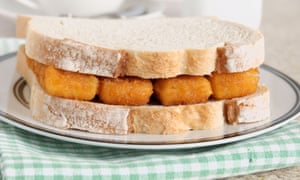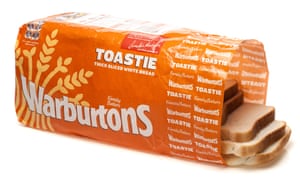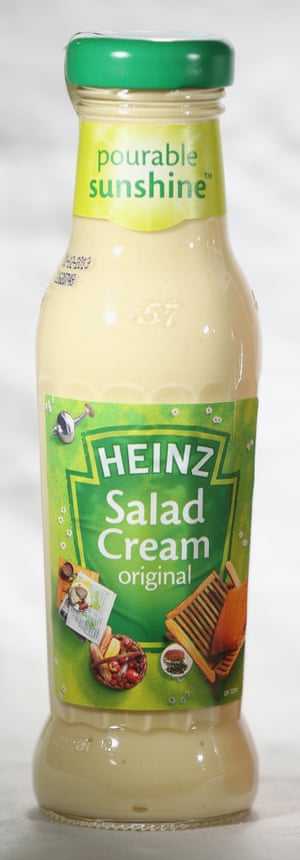
Friends! Small children! Mortally drunk students! One and all, lend me your brains, for How to Eat – the Guardian blog that explores how best to eat the nation’s favourite foods – is, this month, taking on one of the great unifying dishes of British cuisine, the fish finger sandwich.
Sixty years after fish fingers were launched in the UK (using a slogan that could be said to encapsulate the British psyche: “No bones, no waste, no smell, no fuss”), we still eat more than 1.5m of these breaded beauties each day, often slapped between two slices of bread. From the gussied-up versions that issue from gastropub kitchens to those thrown together at 4am, the fish finger butty is everywhere. Given all that practice, you might imagine that we long ago settled on its ideal form. Far from it. Debate rages on about every tiny detail. BTL, please refrain from trawling your fellow commentators or talking provocative pollocks. Light grilling of each other is fine. Even salty language. But unnecessarily vinegary attacks may lead to the aggressor being frozen out.
Contents
The impossibility of perfection?
The fish finger “scene” is divided into two often mutually antagonistic camps: posh and traditional. However, neither can claim to have produced the perfect fish finger sandwich. In fact, in their militant defence of their entrenched positions, both groups fail to see the flaws in their own methodology or the valuable lessons they could learn from one another.
For instance, no one really wants a fish finger sandwich served on huge doorstep slices of bread. In this instance, using great plateaux of loaf is a pose, a foodie affectation. Similarly, it is inverted snobbery of the worst kind to maintain that a “proper” fish finger sandwich can only be made with budget fish fingers, which offer a tiny, grey inner core of mulched, fish-derived protein matter at the centre of a limp, greasy lump of breadcrumb. They may bring on Proustian memories of school dinners/late-night adventures in bedsit cookery, but they cannot, in any objective sense, be said to taste “nice”. Hopefully, this blog will lay out the case for a third way forward.
Bread

Scientists (working on behalf of Nasa, no less) may insist there is no such thing as comfort food, but they are American and have probably never eaten a “fish stick” butty. That is why for all their so-called empirical evidence, they do not understand that sinking your teeth into a fish finger sandwich – this carb-on-carb bear hug – is like flopping down on to your favourite sofa. In food terms, it is a return (give or take the tartare sauce) to the simplicity of childhood, and you certainly do not want any of those new-fangled breads – granary, ciabatta, sourdough, bagels even – coming between you and those luscious, golden (OK, orange) fingers of fish.
This is a sandwich that requires the use of soft and superbly fresh, still malleable (we’ll come to that) white bread, cut into slices that – as a general rule – should be around half the thickness of your fish fingers. Any thicker (are you listening pub kitchens?) and this becomes a slog of a sandwich, a large inedible wodge of crusty bread seasoned with a bit of fish and sauce. Such thick bread also makes your sandwich difficult to control (see below). By all means, use proper bread, but your homemade and/or artisan loaf (see the bacon butties at St John Bread & Wine) needs, in essence, to be a high-class, slow-proved doppelganger for white sliced supermarket Chorleywood bread. This sandwich needs sweet, silky white bread and, in the absence of an obvious upgrade, Warbie’s will do just fine.
Butter
Obviously, and lots of it. Spreadable butters, margarines or any of that “low-fat, healthy heart” malarkey are verboten. If you are watching your diet that closely, the fish finger sandwich is not for you. You need something else. Such as granola. Or an apple.
Fingers
The second way in which foodie pubs over-engineer the fish finger sandwich is in producing “fingers” that threaten the structural integrity of the sandwich. This occurs in two ways. Often those fingers are nothing of the sort. Instead, they are glossy goujons of battered, fried fish that – never mind the blithe mis-selling or semantic laxness – consequently slip out of your sandwich every time you lift it to your mouth. Even when those fingers are correctly breaded, they can be such large, irregularly shaped specimens that they, likewise, wriggle free from the two foam mattresses of bread from which your sandwich has been made. Thick bread compounds the problem, in that it makes it very difficult to get a firm grip on the sandwich and its contents.
Fish fingers don’t just have a regular rectilinear shape because it is easily replicated on a factory production line. It also makes them perfect to build into a sandwich. You want to make your own, you say? Well, crack on. It is easy enough to produce fish fingers at home or in a pub kitchen that have right angles in all the right places.
In reality, there is no dire need to make your own, nice as that may be. The thicker, cut-from-fillet supermarket fish fingers (as opposed to those made from reconstituted protein) are perfectly adequate and minimise the faff in what should be the ultimate faff-free meal. In many ways, the fish finger sandwich is a celebration of processed food; jazz it up too much, as so many pub kitchens illustrate, and you ruin it.
That is not to say, however, as some adherents of “filthy food” do, that a fish finger sandwich must only be made with dodgy, budget fish fingers. If that is all you can afford, they will do a job. Ultimately, there is no such thing as an unenjoyable fish finger sandwich. But to claim that cheapo fish fingers are superior is misguided nostalgia. If we are talking about the ultimate fish finger sandwich, there is a sweet spot, an overlap, between the upper echelons of what you can buy in the supermarkets and what you can make at home.
Sauces

The use of brown sauce is a heresy (what is this, kedgeree?), as are new-wave hipster chilli sauces. In both cases, those are bullies that will bustle in and take over your sandwich. The use of mayo* and/or ketchup is less offensive, but a bit childish. Yes, it is sweet and lubricating and it offers a dim-wattage flash of tart spiciness, but it is all a bit dull and one-note. The obvious enduring classic that you should be using here is a thick and spiky tartare sauce. And that is something which you should definitely try to make at home (shop-bought versions, particularly jarred, are, generally, vile). Finally, judiciously sprinkle your fingers with a little vinegar.
*Never salad cream. I would sooner put WD40 on a sandwich.
Garnishes
Does it really need any? Pickle or onion are unnecessary if you opt for tartare sauce; watery tomatoes are unwelcome as is, for the same reason, iceberg lettuce. Rocket or watercress is a more obvious choice, but it tends to be overdone to the point where you feel as if you are chewing through a garden hedge to get to the good stuff. A little goes a long way. As for chips or a fried egg? This is not a three-course meal. The only serious contender in this category is cheese, which, although it makes sense from a flavour perspective, introduces a claggy layer into the sandwich that (particularly if you cut the cheese too thickly) can make it a little hard-going. Conclusion? Go naked. The sandwich, that is, not you.
Patience and packing
Like steak, a fish finger sandwich benefits from being allowed to rest before you serve it. A minute or two should do it. The hot fish steams the bread a little, and that dampness helps the bread mould itself around the fingers. Complete that process by gently pressing the sandwich down with the flat of your hand to squish everything together.
When?
This really is the ultimate anytime snack. Drunk at 2am? Fish finger sandwich. Hungover at 10am? Fish finger sandwich. Hungry at lunch but don’t quite know what you want? Fish finger sandwich. Quick tea? Fish finger sandwich. And so on.
Equipment
Plate or (let’s give the pub chefs a break) a wooden board. Frankly, any flat surface will do. Napkin or a piece of kitchen roll; you’re going to need it. One, possibly two hands. Note: if you feel the need to eat your fish finger sandwich with a knife and fork you are either a) an editor at Debrett’s or b) eating in a pub or restaurant where you have been served something that does not fulfil its handheld function as a sandwich.
Drink
Pale/golden beers, white wine or champagne. Tea (never coffee) or sparkling mineral water for the teetotallers. The latter’s bubbly, tongue-scrubbing qualities are useful in this oily context. However, most sparkling soft drinks are too aggressively flavoured to partner with a fish finger sandwich.
So, fish finger sandwiches: how do you eat yours?
[Source:- The Gurdian]
